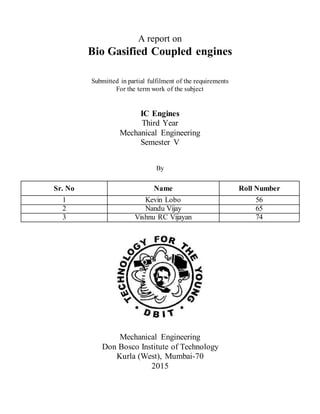The document discusses bio gasified coupled engines which convert bio/organic fuel into producer gas or syngas that can be used to power engines. It describes the process of biomass gasification where biomass is converted into combustible gases like carbon monoxide, hydrogen, and methane through incomplete combustion. This producer gas can then be used to power gas engines or for heat applications. The document outlines the various zones in a gasifier where different chemical reactions occur during gasification and discusses reaction chemistry and technologies used.


















